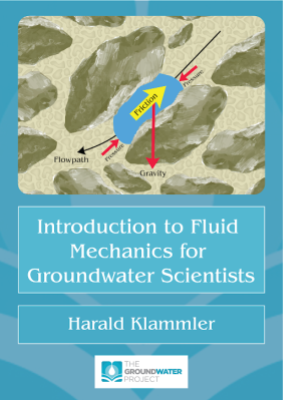Starting from Newton’s laws of motion and viscosity, this book is an introduction to fundamental aspects of fluid dynamics that are most relevant to groundwater scientists. Based on a perspective of driving versus resisting forces that govern the motion of a fluid, the author derives Darcy’s law for flow through porous media by relating it to the Navier-Stokes equation for fluid flow in general. By combining the effects of gravity and pressure, the author identifies hydraulic head as a convenient numerical quantity to represent the force driving groundwater flow. In contrast to the physical derivation of hydraulic head, hydraulic conductivity emerges as a parameter related to the resisting frictional forces between the mobile fluid and the stationary porous medium. These frictional seepage forces also affect the effective stress state of the porous medium, thus establishing a link to soil stability and quicksand formation.
Combining Darcy’s law with the law of mass conservation leads the reader to the fundamental equations of saturated groundwater flow. Finally, the effects of capillary forces are included to establish the governing equations for unsaturated and multi-phase flow.
Throughout the book, the author focuses on thoroughly illustrating and deriving the equations while applying order of magnitude analyses. This approach makes it possible to extract the most information, for example in terms of the scale of response time, without requiring explicit solutions. A number of boxes and solved exercises contain further details and links to practical applications such as the water table ratio that reflects ‘fullness’ of an aquifer and the performance of slug tests for in situ measurement of hydraulic conductivity. This book makes an important contribution to groundwater science by providing a progressive introductory explanation of the physical mechanics of groundwater flow and the accompanying socioeconomic and ecological problems that may arise.

